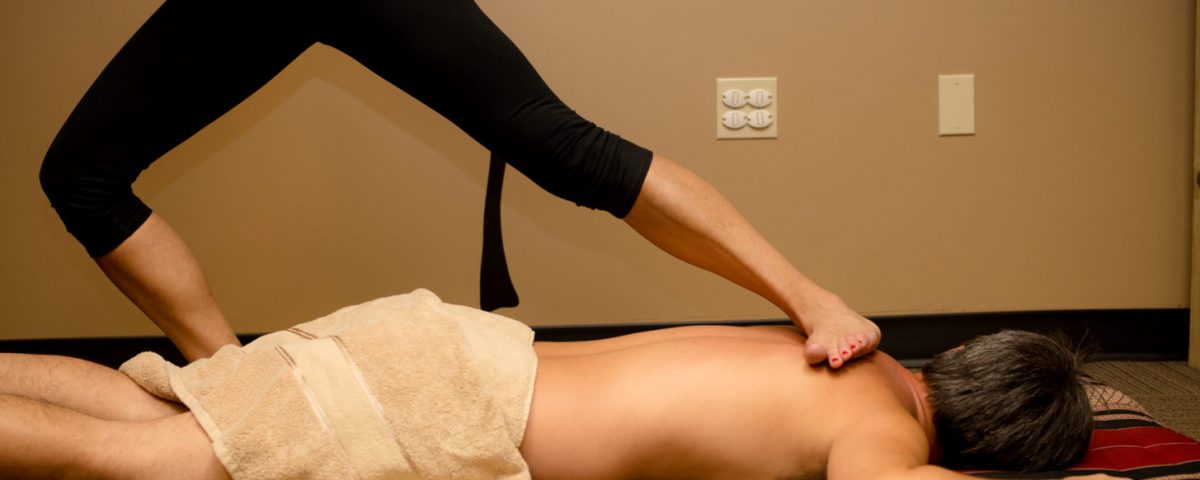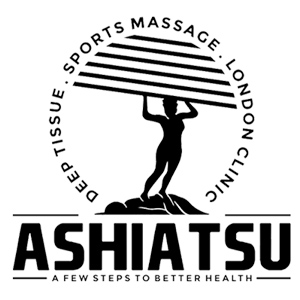How does a barefoot massage feel?
Two of the therapeutic benefits of ashiatsu massage are pain relief and improved blood flow. The Japanese word for “foot pressure” is “ashiatsu.” Ashiatsu is a Japanese healing method that has been around for a long time. Techniques that are at the heart of ashiatsu are now used all over the world.
After learning traditional ashiatsu at Ashiatsu Oriental Bar Therapy, we used our feet instead of our hands to create our kind of deep tissue massage. This kind of massage is called Ashiatsu Therapeutic Massage. We use therapeutic massage techniques like deep tissue, trigger point, active release, and myofascial release. Each session is made to fit the needs and goals of the client.

How does an Ashiatsu massage work?
The massage therapist walks barefoot on the client’s back, using his weight as leverage to relieve pain and suffering. A message like this may sound risky at first but be assured that it is performed in a safe and controlled environment to ensure no one is harmed. Remember that the massage is done in a safe and controlled way that keeps anyone from getting hurt.
Different barefoot massage techniques and the weight of gravity are used to stimulate the client’s many nerve systems. Besides making the blood flow better, this has several other benefits.
Health Benefits of Ashiatsu Back Massage on Nerve Ends:
The practitioner moves along the client’s spine and gently presses on nerve endings. This can give nerves more room and stop muscles from spasming. You can also improve blood flow in the lumbar area by gently pressing on the area. When the nerves get more oxygenated blood, pain and discomfort go away.
You can stand up straighter with the help of ashiatsu massage:
This is possible because when nerve centers are freed up, your movements make them fire in the right order. Many people have chronic pain and bad posture because the nerves that control their limbs don’t work right.
This could also make you walk oddly. Because Ashiatsu back massage “untangles” nerves, your posture and gait will improve as your muscles can contract and relax in the right order. This is best achieved with one or two Ashiatsu massages per week.

Ashiatsu massage helps the body get rid of toxins:
Detoxification is yet another benefit of this particular massage technique. A type of massage called ashiatsu works on the lymphatic system, and this system’s job is to clean your body and make your immune system work better.
When your body is cleaned out properly, you feel better about yourself and have more energy to get things done. Your liver and kidneys, in particular, are not under unnecessary strain and may function at peak efficiency.
What are the advantages of an ashiatsu deep tissue massage over a regular one?
Ashiatsu Therapeutic Massage therapists can use the smooth, continuous deep pressure muscles needed to relax. The therapist uses overhead bars and her weight to control the amount and depth of pressure and the angle of the muscles. This allows her to experience a greater variety of pressures than she would with a standard massage. This frees the therapist from exerting herself physically during treatment.
This gives the therapist more ways to meet the client’s specific needs and treat the illness that makes them feel bad. Forget about wondering if the desired therapeutic impact will occur.
The feet must be clean:
Let’s consider the routine of slipping on our footwear and socks after a refreshing shower. Nothing on the phone, including the buttons, keyboard, or grip, ever gets touched by us. Before and after each massage, the therapist washes their feet just like they do with their hands to ensure they are clean and ready to touch your skin.

The Pros of Barefoot Ashiatsu Massage:
- The feet are less painful (but not as comfortable as the pointy elbows and thumbs).
- The customer can relax into the strokes because the feet have a large surface area. It is said to bring on deep relaxation quickly.
- Gravity lets you apply more force than you could by hand.
- Ashiatsu with the feet is the most intense massage you can get.
- Ashiatsu works quickly to improve circulation.
- It’s luxurious and also good for you.
- Ashiatsu is different from other types of massage because it helps warm up the major muscle groups.
- Ashiatsu eases stress and relaxes tight muscles.
- Deep pressure makes the body’s healing systems work better.
- When compared to intense neuromuscular work, there is often less pain.
How challenging do you anticipate ground sensations to be?
Working with their feet allows them to apply more pressure and makes the client feel more at ease. Many manual deep tissue therapists dig into the tissue with elbows or thumbs, and these sharp bones can hurt tissue that hasn’t been warmed up enough. Because the foot is soft, smooth, and flat, the customer doesn’t feel anything while pressure is being put on it. Whether it’s deep or light, it’s a real treat!
Ashiatsu gives a wide range of deep pressure that doesn’t hurt. Ashiatsu is meant to feel like a Swedish massage, with deep, flowing pressure that doesn’t hurt. Ashiatsu treatments use wide, cushioned foot surfaces to help deep tissue patients calm their nervous systems without weakening the intensity of the treatment.
Clients are less worried:
The pressure, length, and flow of the strokes are more consistent for the patient because the foot has a larger surface area. When tools with more bone, like the thumb, knuckle, or olecranon process, are used to apply pressure, the more bony surfaces cause more tissue stress and muscle fiber breakdown than the rounder, softer areas of the foot, such as the ball of the foot and the heel.

Stimulation of the nervous system of the lymphatic system. Because long foot strokes go from head to toe, Ashiatsu stimulates the lymphatic and parasympathetic nervous systems, making people feel better and healthier.
The blood flow is improved:
Circulation is improved by the therapist’s circular foot movements, which bring more oxygen to the treated area and speed up the release of toxins.
Deep tissue is less important than:
As it goes deeper than deep tissue and works with the fascia all over the body, it releases adhesions, pain, and long-term holding patterns. This helps the body’s natural ability to heal and get better.


